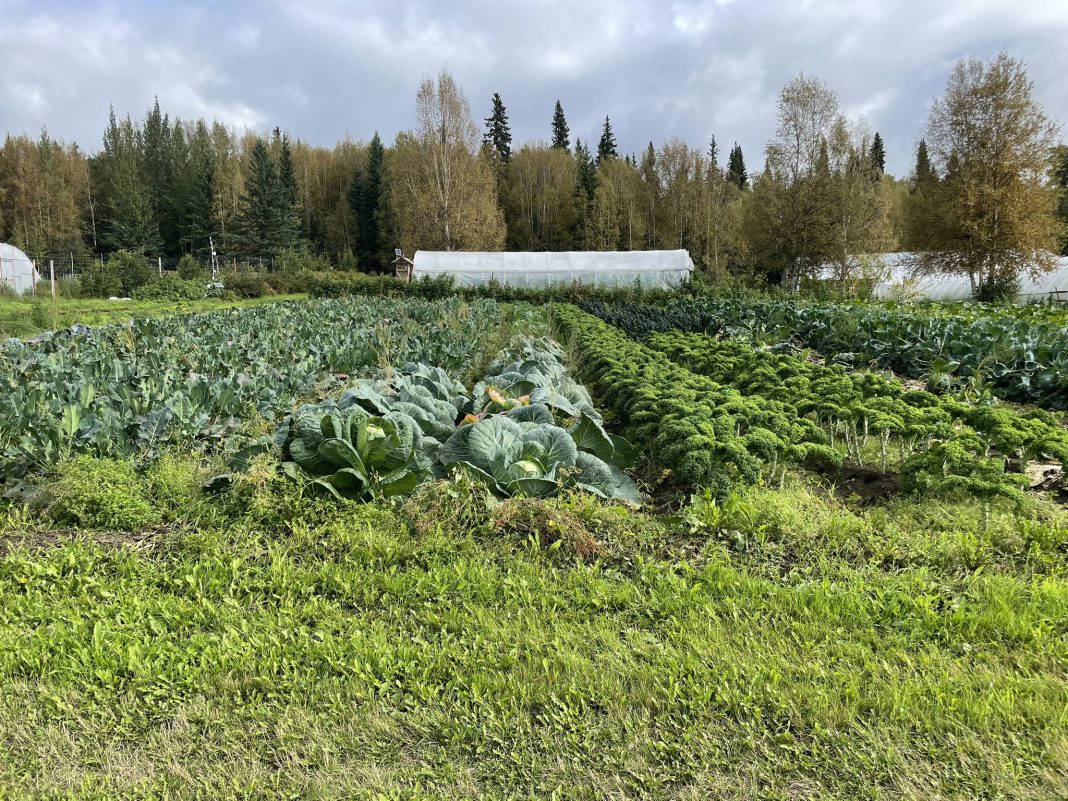Melissa Ward Jones discusses a recent paper published in Arctic, Antarctic, and Alpine Research of the first global study on permafrost-agroecosystems, published by members of the International Permafrost Association Permafrost-agroecosystem Action Group
When one thinks of high-latitude and mountainous regions, one usually thinks of cold and snow, not agriculture. But agriculture does occur in these areas. The climate of these regions limits the options for which crops to grow, and chosen animal species, such as yaks and reindeer, are adapted to cold. These regions also contain permafrost, or perennially frozen ground, a unique feature of these regions.
The response to thawing permafrost, caused either by climate warming or land use change for cultivation, is varied (Ward Jones, 2024). These responses range from simple increases in ground temperatures to ground surface collapse when permafrost is ice-rich. The presence of permafrost and its response to thaw can add additional challenges to agricultural activities.
What are permafrost-agroecosystems?
Permafrost-agroecosystems describe any agricultural activity, such as crop cultivation and animal husbandry, in areas containing permafrost. These systems typically support small-scale local communities with few exports. A recent paper published by Ward Jones et al. (2024) provides an overview of the diversity of permafrost-agroecosystems through seven case studies: crop cultivation in Alaska, U.S.; Indigenous food systems in the Northwest Territories, Canada; animal husbandry and Indigenous hay production in the Sakha Republic (Yakutia); Russia; animal pastoralism in Mongolia; yak pastoralism in Nepal; reindeer herding and berry picking in Northern Fennoscandia; and reindeer herding in northwest Russia.
While each case study represents the diversity of agricultural activities and geographic locations, many commonalities were found. Agricultural producers and pastoralists are aware that their environments are changing. Still, many knowledge gaps related to permafrost exist, and they are not necessarily aware that these changes are linked to thawing permafrost.
Northern and upward shifts in agricultural production
Climate change is causing crops to reach the upper limits of their temperature range for growth in primary producing areas (Zhao et al., 2017); one adaptation strategy is to move agriculture northward and at higher elevations. High latitude and mountainous areas are estimated to gain the most land area to grow globally important crops by 2060-2080 under RCP 8.5. Hannah et al. (2020) estimate these regions will gain over 10 million km2 in high latitude and ~1 million km2 in mountainous regions, leading to a geographical redistribution in agricultural production.
In certain regions, such as the U.S., these geographical shifts may already be underway. The number of farms in the continental U.S. declined by ~14 % between 2007 and 2022, while in Alaska, farm numbers increased by ~71 % over the same period, according to the US Department of Agriculture’s Census of Agriculture.
Lack of datasets and research
One of the limitations of sustainably managing and developing permafrost-agroecosystems are the lack of datasets and overall research of these systems. To our knowledge, permafrost- agroecosystems are not included in any global agricultural study and datasets on their locations are patchy or non-existent. Not only does this make our overall knowledge limited, but it also makes tracking any potential future increase impossible. Ward Jones et al. (2024) provide a proxy for where permafrost-agroecosystems are likely to be most prevalent.
Furthermore, research is needed, specifically with local agricultural producers and pastoralists, to develop permafrost-conscious agricultural practices that are suited to local permafrost conditions and within local social, economic, and policy contexts.
Recommendations for policy makers
Ward Jones et al. (2024) provide recommendations and considerations for policymakers, including:
- Large extents of land in high latitude and mountainous regions are already being utilized for Indigenous populations through subsistence food harvests and migration routes for herders. These populations must be included in discussions and plans for any future developments, including future agricultural projects and industrial development.
- Provide funding for transdisciplinary research with local agricultural producers and pastoralists to develop permafrost-conscious practices and the development of datasets for permafrost-agroecosystems.
- Be mindful of the duality of permafrost, that it can create hazards (such as landslides in mountainous regions) and be valuable to preserve. For example, minimizing thaw would limit the amount of carbon that is released, and in areas of ice-rich permafrost, it would avoid problems created by subsidence. Creating financial incentives or expanding climate-smart agriculture programs could incentivize permafrost preservation, but the development of permafrost-conscious practices is needed first.
While permafrost-agroecosystem may presently be considered negligible in global agricultural systems, their relevance may increase in the future. There is currently the opportunity to be proactive in developing locally relevant research programs and policies.
References
- Hannah, L., Roehrdanz, P.R., KC, K.B., Fraser, E.D., Donatti, C.I., Saenz, L., Wright, T.M., Hijmans, R.J., Mulligan, M., Berg, A. and van Soesbergen, A. (2020). The environmental consequences of climate-driven agricultural frontiers. PloS one, 15(2), p.e0228305.
- Ward Jones, M. (2024). Permafrost grown: The heterogeneity of permafrost conditions. Open Access Government April 2024, pp.386-387.
- Ward Jones, M., Habeck, O.H., Ulrich, M., Crate, S., Gannon, G., Schwoerer, T., Jones, B., Kanevskiy, M., Baral, P., Maharjan, A., Steiner, J., Spring, A., Price, M.J., Bysouth, D., Forbes, B.C., Verdonen, M., Kumpula, T., Strauss, J., Windirsch, T., Poeplau, C., Shur, Y., Gaglioti, B., Parlato, N., Tao, F., Turetsky, M., Grand, S., Unc, A., and Borchard, N. (2024). Socio-ecological dynamics of diverse global permafrost-agroecosystems under environmental change. Arctic, Antarctic, and Alpine Research, 56(1).
- Zhao, C., Liu, B., Piao, S., Wang, X., Lobell, D.B., Huang, Y., Huang, M., Yao, Y., Bassu, S., Ciais, P. and Durand, J.L. (2017). Temperature increase reduces global yields of major crops in four independent estimates. Proceedings of the National Academy of sciences, 114(35), pp.9326-9331.
The publication by Ward Jones et al. (2024) in Arctic, Antarctic, and Alpine Research was supported by the International Permafrost Association, US National Science Foundation RISE award 2126965 and the European Commission grant number 869471.

This work is licensed under Creative Commons Attribution-NonCommercial-NoDerivatives 4.0 International.


